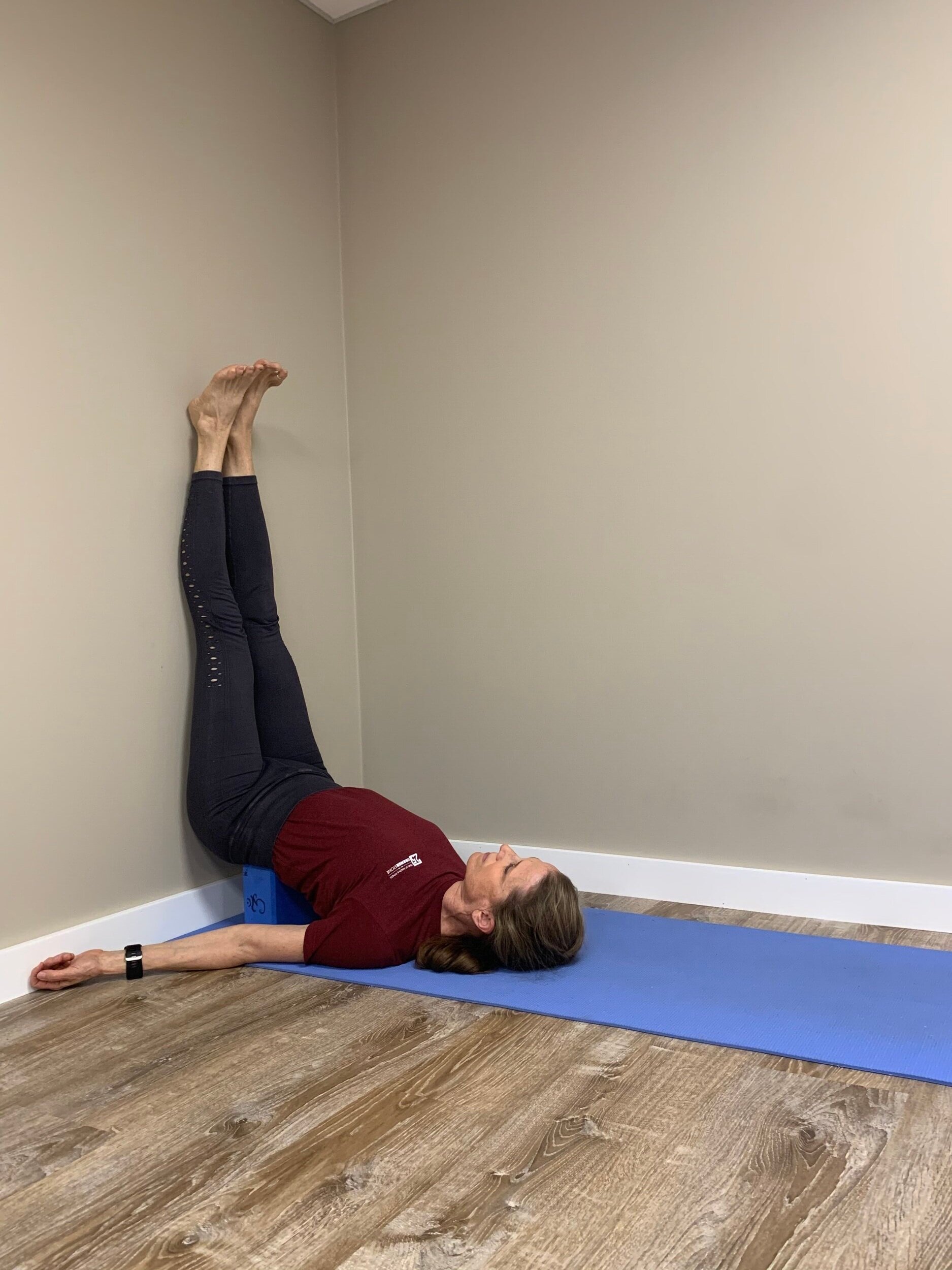Shoulder Stand, or Salamba Sarvangasana, is often the first inversion learned. It is the easiest inversion to balance in because of how the weight is spread across the top of the shoulders, the upper arms and head. It is the first pose where you learn to engage your core while upside down. If Shoulder Stand is practiced on blankets to support the shoulders and lessen the pressure on the neck, it can be done safely by most students. Check out my blog post on how to set up your blankets for Shoulder Stand, here. I would not recommend doing Salamba Sarvangasana without blankets, however. But what do you do when you are in class and you don’t do Shoulder Stand?
There could be reasons that you do not want to do Shoulder Stand: neck or shoulder pain, back pain, glaucoma, detached retina, fear, you never learned properly (Shoulder Stand should be learned live, under the guidance of a teacher), or you have your period (inversions should not be practiced when you have your period). Here are some suggestions for modifications when this pose comes up in class:
Viparita Karani - or Legs up the Wall Pose
Viparita Karani on the tall side of a block
Viparita Karani on the middle height of the block
Viparita Karani on the lowest height of the block
Viparita Karani no block
One of the things Viparita Karani teaches is the opening of the chest. This is accentuated with the block on the highest height you can use without causing pain. Work to your capacity. Whether you are on a block or not, make sure that you are lifting the chest and keeping the backs of the heads of the arm bones on the floor.
Setu Bandha Sarvangasana – or Supported Bridge Pose
Notice how my head and shoulders are on the floor so that the bolster is lifting my chest. It is also important, to put your feet on the wall and press through your feet, inner and outer edges equally. People often ask why don’t I bend my knees if it is “Supported Bridge”. We could do that if we were working on Wheel. Since we are working on a modification for Shoulder Stand, this is a more similar pose in shape and feel.
Sometimes doing Viparita Karani or Setu Bandha may not feel good on your back. In that case try this next pose.
Parayankasana – or supported Couch Pose. This pose opens the chest and can be done in two ways:
If you can sit in Virasana, or Hero Pose, do this. You can do this arm position in this version of the pose and also in the next version with your legs straight. In this photo, I am on the highest side of the block. Notice that my neck and face are straight and parallel to the floor and not tipped back.
If you cannot sit in Hero pose, stretch your legs straight out. You can also hold opposite elbows overhead as in the previous picture. That increases the stretch on the arms. Notice that I am on a lower block set up in this photo.








